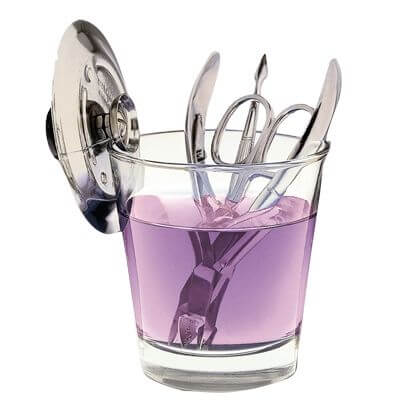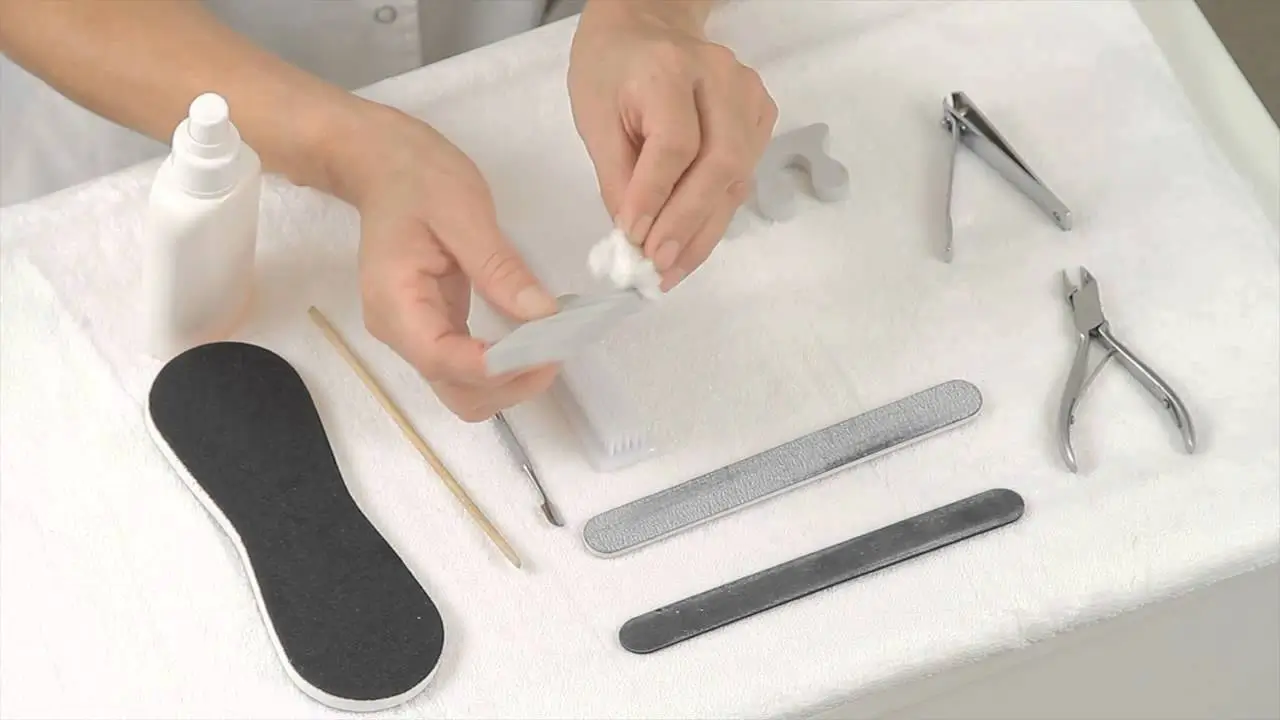How to properly Clean and Sanitize Your Nail Care Tools
Keeping your nail care tools clean and sanitized isn’t just about maintaining their appearance-it’s a critical step in protecting your health. Dirty tools can harbor bacteria, fungi, and viruses, which can lead to infections such as paronychia, fungal nail disease, or even hepatitis. Whether you’re a professional nail technician or someone who enjoys DIY manicures at home, this guide will walk you through the best practices for cleaning, sanitizing, and storing your tools to ensure they’re safe and long-lasting.
Disclosure: This article contains Amazon affiliate links. As an Amazon Associate, I earn from qualifying purchases. If you click on a link and make a purchase, I may earn a small commission at no extra cost to you.

Why is it important to clean and sanitize nail tools?
Our hands and nails harbor a multitude of bacteria, fungi, and viruses. Using unclean tools can transfer these microorganisms, leading to infections like fungal nails, paronychia (infection around the nail), or even more serious illnesses.
Proper cleaning removes debris and organic matter while sanitizing kills or inhibits the growth of harmful microorganisms. Neglecting this crucial step can compromise your nail health and overall well-being.
What tools need cleaning and sanitizing?
All nail care tools that come into contact with your nails or skin should be cleaned and sanitized regularly. This includes:
- Nail clippers: These can harbor bacteria and fungi, especially if used on multiple people.
- Cuticle pushers and nippers: These tools are used close to the skin and can easily introduce pathogens if not properly sanitized.
- Nail files and buffers: While they may seem less risky, nail files and buffers can still accumulate dead skin cells and bacteria.
- Tweezers: Used for shaping eyebrows or removing splinters, tweezers can also transfer bacteria.
- Brushes: Especially those used for acrylic application or nail art, brushes can trap product residue and harbor bacteria.
- Manicure bowls/containers: These need to be cleaned and sanitized between clients or uses.
Cleaning vs. Sanitizing: What’s the difference?
Cleaning and sanitizing are two distinct processes, and both are necessary for proper hygiene.
Cleaning involves physically removing debris, dirt, and organic matter from the tools using soap and water or a specialized cleaning solution. Cleaning does not necessarily kill all microorganisms, but it significantly reduces their numbers.
On the other hand, Sanitizing uses chemical agents to kill or inhibit the growth of bacteria, fungi, and some viruses. Sanitizing is done after cleaning to ensure that the disinfectant can effectively reach and eliminate the microorganisms.
Tools You’ll Need
Before diving into the process, gather these supplies:
- Mild antibacterial soap or dish soap
- Warm water
- A soft-bristled brush (an old toothbrush works)
- A container for soaking
- Disinfectant solution (70-90% isopropyl alcohol, hydrogen peroxide, or a hospital-grade disinfectant (e.g., Barbicide))
- A clean towel or paper towels
- A UV sterilizer or autoclave (optional, for professionals)
- Gloves (to protect your hands during cleaning)
Step-by-Step Guide to Cleaning and Sanitizing Nail Tools

Before you start, disassemble tools if possible. This allows for more thorough cleaning.
1. Pre-Cleaning
Start by physically removing all visible dirt, nail filings, and residue from your tools. Then, Scrub tools under warm running water using soap and a brush. Pay attention to crevices in clippers, cuticle nippers, metal files, and all hard-to-reach areas.
After that, soak tools in soapy water for 5-10 minutes if debris is stubborn. Rinse thoroughly to ensure no soap remains. Use a clean paper towel or cloth to dry the tools completely, since moisture can promote the growth of bacteria.
Pro Tip: Avoid submerging wooden or porous tools (like emery boards) in water, as they can warp or trap moisture. Replace these regularly instead.
2. Sanitizing
Cleaning removes dirt, but sanitizing kills microorganisms. Choose one of these methods for sanitizing your nail care tools:
A. Alcohol Soak (At-Home Method)
70-90% Isopropyl Alcohol is a common and readily available disinfectant effective against many bacteria and some viruses. Submerge your tools in 70-90% isopropyl alcohol for 10-15 minutes. Air-dry on a clean towel.
B. Barbicide or Hospital-Grade Disinfectant (Professional Standard)
Mix disinfectant according to the product’s instructions (e.g., Barbicide is diluted with water). Soak tools for 10-15 minutes, then rinse and dry.
C. Boiling Water (For Metal Tools Only)
Boil tools in water for 5-10 minutes to kill pathogens. Dry immediately to prevent rust.
D. UV Sterilizer or Autoclave (Advanced Option)
UV light or steam sterilization adds an extra layer of protection, ideal for salons.
Avoid Bleach: It can corrode metal tools over time.
3. Drying and Storing
Moisture breeds bacteria and rust. Air-dry completely in a clean, dust-free area. Then, store your cleaned and sanitized tools in a clean, dry, and airtight container or pouch to prevent contamination.
Maintenance Schedule
After Every Use: Clean tools immediately to prevent residue buildup.
Weekly Deep Clean: Sanitize even if tools haven’t been used (germs can linger).
Discard rusty, dull, or cracked tools. Porous items (buffers, files) should be replaced monthly or after use on multiple clients.
Some Mistakes to Avoid
- Skipping Pre-Cleaning: Sanitizers won’t work properly if debris remains.
- Using Dirty Towels: Always use fresh towels to dry tools.
- Sharing Tools Without Sanitizing: Never share clippers or nippers without disinfecting them first.
- Ignoring Rust: Rusted tools can’t be fully sanitized and may tear nails or skin.
Special Considerations for Professionals
If you run a salon, adhere to strict hygiene protocols:
- Use autoclaves for sterilization (the gold standard).
- Keep separate tools for each client, or sanitize thoroughly between uses.
- Follow state licensing guidelines for disinfectant solutions and tool storage.
Final thoughts
Your nail care tools are an investment in your beauty routine and your health. By taking the time to clean and sanitize them properly, you’ll avoid infections, extend their lifespan, and enjoy flawless results every time. Remember: hygiene is the foundation of gorgeous nails!
Bonus Tip: Educate clients or family members about your sanitizing process to build trust and encourage responsible habits.
Got questions? Drop them in the comments below, and share your favorite nail care hacks! ✨

